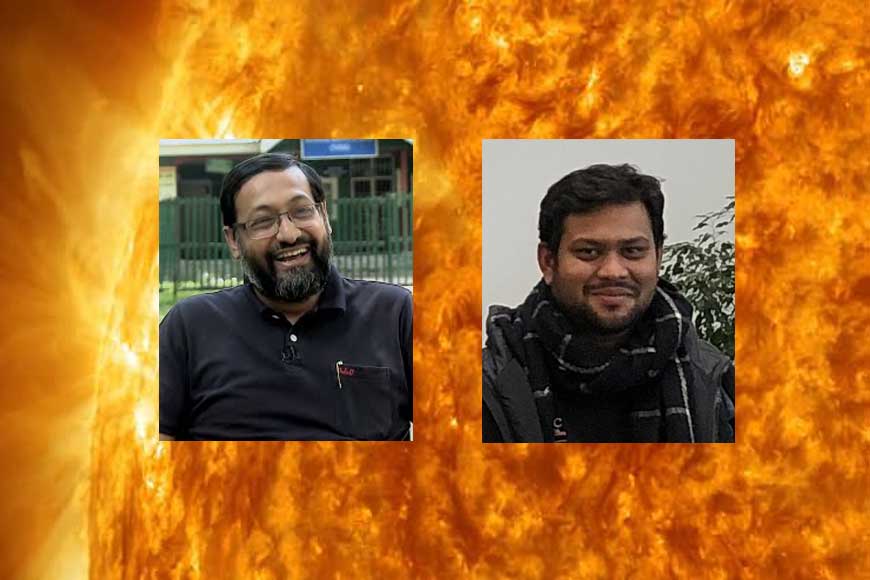BREAKING! Two Bengali scientists record new magnetic explosion on Sun

Recently scientists were startled to observe a massive explosion on Sun’s surface. In the scorching upper reaches of the Sun’s atmosphere, a prominence — a large loop of material launched by an eruption on the solar surface — started falling back to the surface of the Sun. But before it could make it, the prominence ran into a snarl of magnetic field lines, sparking a magnetic explosion. This was observed at NASA’s Solar Dynamics Observatory (SDO), the likes of which have never been seen before.
Previously a type of magnetic reconnection known as spontaneous reconnection has been seen, both on the Sun and around Earth. But this new explosion-driven type — called forced reconnection — had never been seen directly, thought it was first theorized 15 years ago. Four Indian physicists have been researching on this project. Professor Abhishek Srivastava, solar scientist at the Indian Institute of Technology (BHU), Varanasi, was ecstatic because the observation confirms a decade-old theory, may help scientists understand a key mystery about the Sun’s atmosphere, better predict space weather, and may also lead to breakthroughs in the controlled fusion and lab plasma experiments. The other teammates involved in this project include his student, Sudhir Mishra, and two Bengali scientists, Dipankar Banerjee, director of Aryabhatta Research Institute of Observational Sciences (ARIES), Nainital, and his student, Tanmoy Samanta.
Scientists have previously seen the explosive snap and realignment of tangled magnetic field lines on the Sun — a process known as magnetic reconnection — but never one that had been triggered by a nearby eruption. The previously-observed spontaneous reconnection requires a region with just the right conditions — such as having a thin sheet of ionized gas, or plasma, that only weakly conducts electric current — in order to occur. The new type, forced reconnection, can happen in a wider range of places, such as in plasma that has even lower resistance to conducting an electric current. However, it can only occur if there is some type of eruption to trigger it. The eruption squeezes the plasma and magnetic fields, causing them to reconnect.
While the Sun’s jumble of magnetic field lines are invisible, they nonetheless affect the material around them — a soup of ultra-hot charged particles known as plasma. The scientists were able to study this plasma using observations from NASA’s SDO.
The observations allowed them to directly see the forced reconnection event for the first time in the solar corona — the Sun’s uppermost atmospheric layer. In a series of images taken over an hour, a prominence in the corona could be seen falling back into the photosphere. En route, the prominence ran into a snarl of magnetic field lines, causing them to reconnect in a distinct X shape. The new observations have just been published in the Astrophysical Journal.
The scientists are continuing to look for more forced reconnection events. With more observations they can begin to understand the mechanics behind the reconnection and often it might happen.









